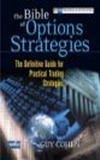Bond Yield vs S&P 500

Kevin had a great post here about using the bond market (TLT) as a leading day trading indicator. Since I last talked about bond yields, I've also been using the bond yield market as a cross reference for my OEX options day trades. The above is a 5 day chart of 10 year bond yield (TNX) vs S&P 500. As you can see, the S&P 500 index is the complete mirror image of the 10 year bond yield. In the case of TNX, it used to lead by about an hour as well (as what Kevin observed in TLT). However, in the recent days' market activity, I realised it has stopped leading by an hour. Its turning point is now more or less in synch with the stock market indices. Perhaps too many traders are using it as a leading indicator that it has lost its effective? Anyway, what I do now with TNX is to use it as an additional confirmation, along with the other tools such as TICK, pivot points, support and resistance and ES futures for my OEX day trades.

Here's a look at the 5 min chart of TNX. Notice how the opening gap on Tue has served as a support area. 5.20% is another level to watch for support. On the other hand, the current Fed rate of 5.25% (yellow dotted line) is an important resistance level where many traders will keep an eye on.


















1 Comments:
Interesting post about TNX as a tool for a leading indicator! Thxs :) I thought about looking into it but just never bothered to do the analysis myself.
Post a Comment
<< Home